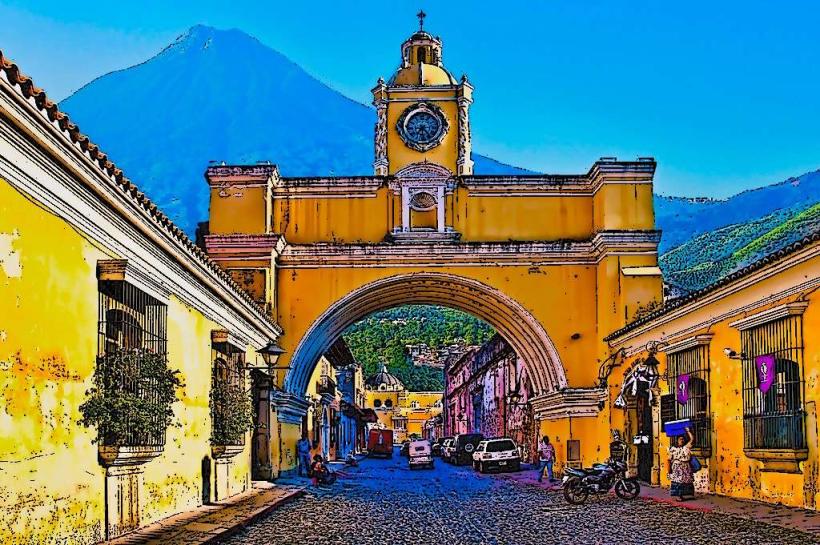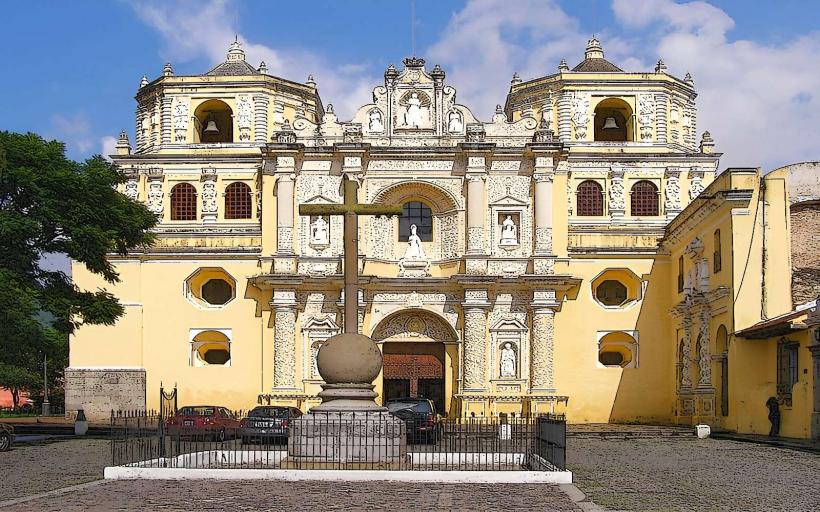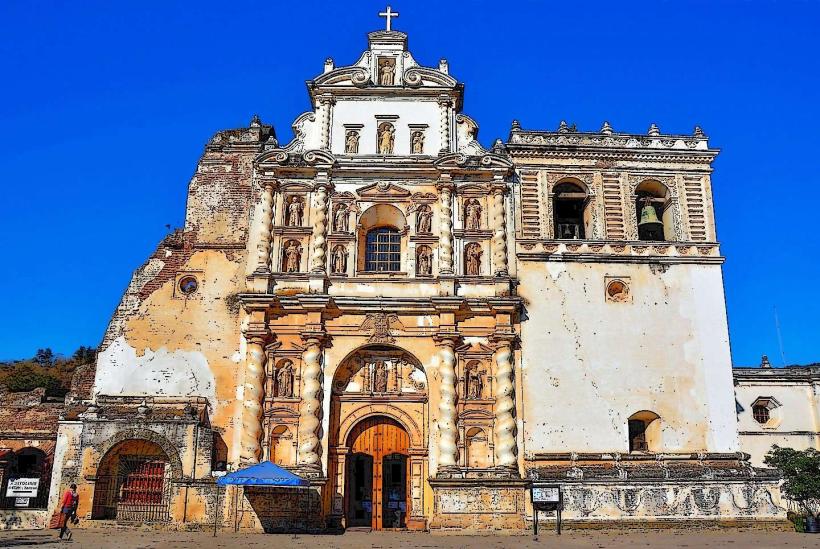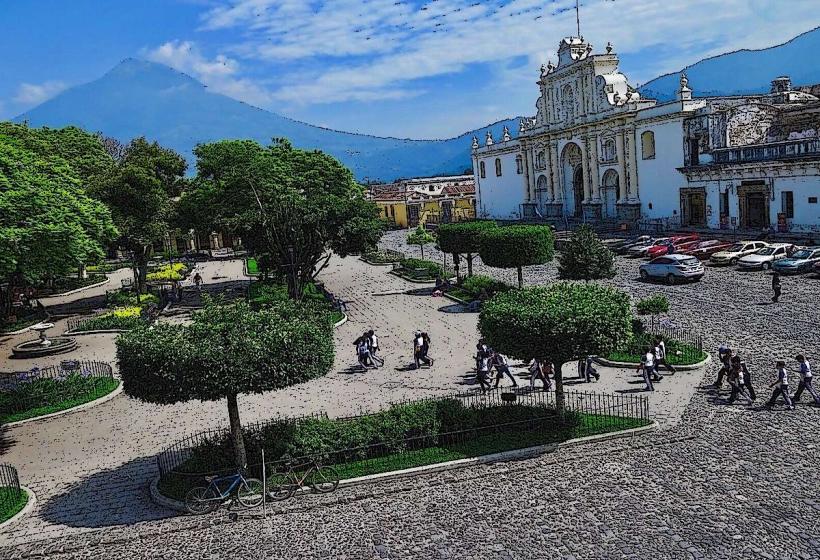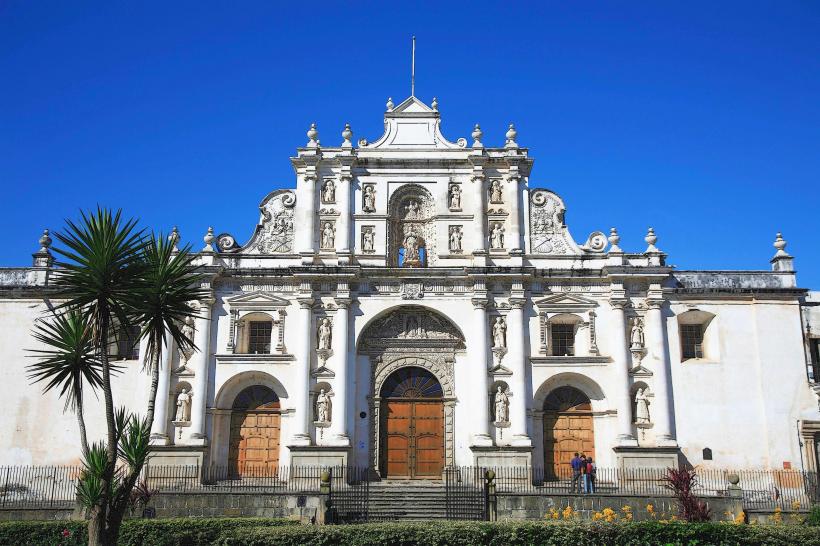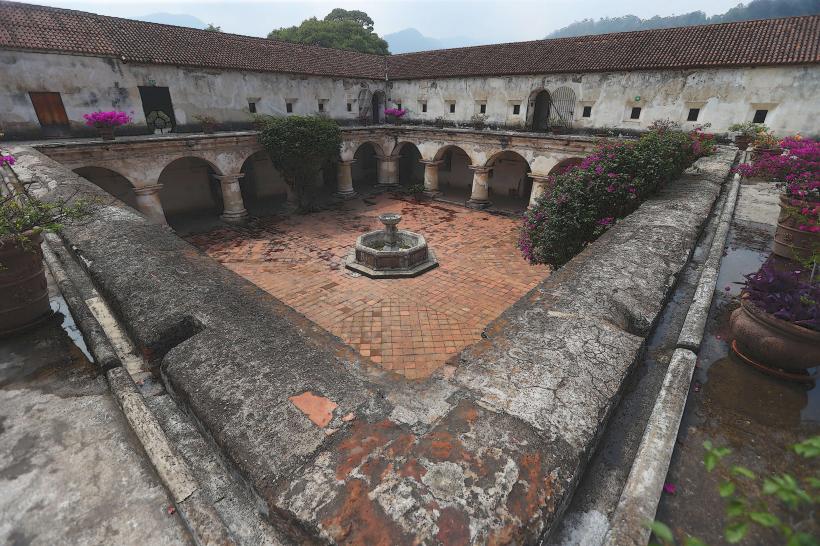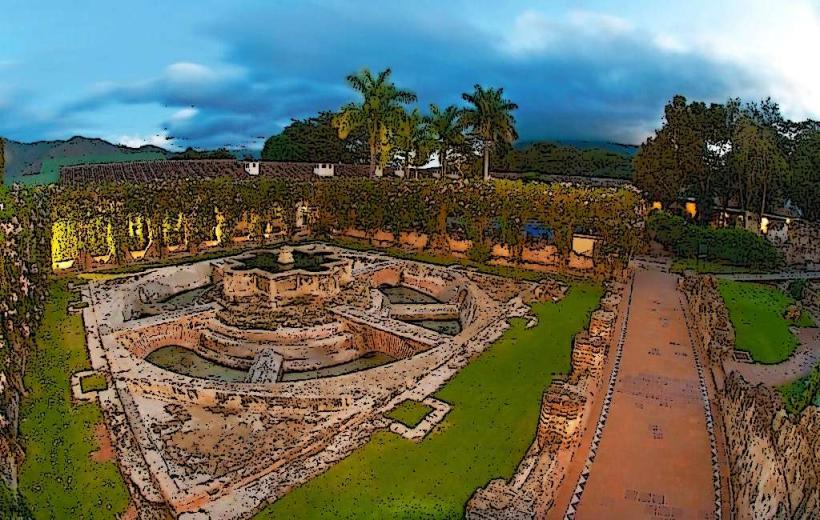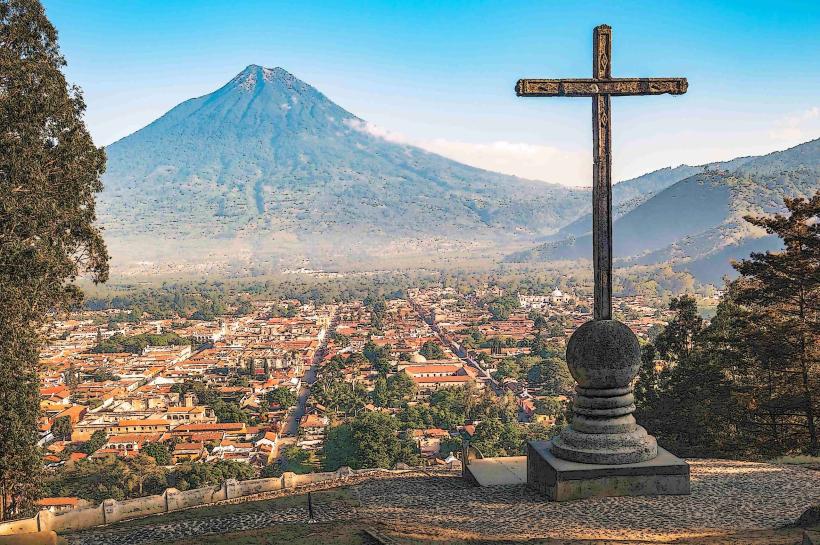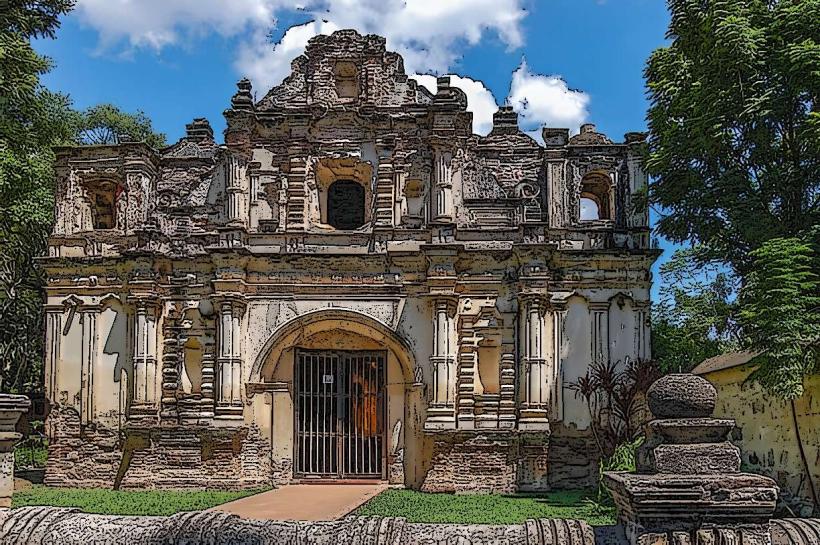Information
Landmark: Museo de Arte ColonialCity: Antigua Guatemala
Country: Guatemala
Continent: North America
The Museo de Arte Colonial (Museum of Colonial Art) in Antigua Guatemala is a renowned cultural institution that showcases the rich artistic heritage of the colonial period in Guatemala. Housed in a beautifully restored colonial building, the museum offers visitors a glimpse into the artistic styles, religious themes, and craftsmanship that defined the 17th and 18th centuries in the region.
History and Significance:
The Museo de Arte Colonial is located in one of Antigua's most historic buildings, which was originally a colonial-era mansion. The building itself is a striking example of Spanish colonial architecture, featuring traditional arched doorways, high ceilings, and wooden beams. The museum was established with the goal of preserving and promoting the artistic and cultural heritage of Antigua Guatemala, a city that was once the capital of Central America during the Spanish colonial period.
Over the years, the museum has become an important center for the study and appreciation of colonial art, as well as a popular tourist attraction for those interested in the artistic history of Guatemala and Central America.
Collections and Exhibits:
The Museo de Arte Colonial has a vast collection of works that span the colonial period, primarily focusing on the 17th and 18th centuries, when Antigua was a major hub of Spanish colonial culture. The museum’s collection includes a variety of religious art, paintings, sculptures, and decorative objects that reflect the influence of Catholicism, Spanish Baroque style, and local indigenous traditions.
Religious Art:
The core of the museum’s collection is its extensive collection of religious art, which includes paintings, wooden sculptures, and altarpieces. These works often depict scenes from the Bible or portray various saints, with a particular emphasis on Catholic iconography. Many of the pieces were created by local Guatemalan artists and European missionaries during the colonial era.
One of the most notable aspects of the museum’s religious art collection is the Baroque style, which was dominant in the colonial period. The intricate detail and emotional intensity of these works reflect the Catholic Church's influence over the region and the role of art in promoting religious devotion among the local population.
Paintings:
The museum features a rich collection of paintings, many of which were created by local and Spanish artists. These paintings often feature religious subjects, such as depictions of Christ, the Virgin Mary, and various saints. The works are marked by a fusion of European and indigenous styles, blending European techniques with local themes and motifs. The oil paintings in the museum highlight the influence of Spanish Baroque art, with rich colors, dramatic lighting, and detailed representations of religious figures and scenes.
Sculptures:
In addition to paintings, the museum houses a selection of wooden sculptures that were often created for use in churches and monasteries during the colonial period. Many of these sculptures represent saints, angels, or scenes from the life of Christ, and are highly detailed and expressive. The works are often created using local wood and are painted with vivid colors to enhance their religious significance.
Liturgical Objects and Decorative Arts:
The museum also features liturgical objects used during religious ceremonies, including chalices, candlesticks, and altar furnishings. These objects are beautifully crafted and reflect the high level of skill and artistry that went into the creation of religious artifacts during the colonial period. Many of these pieces are made from silver, gold, and precious stones, emphasizing the importance of religion in colonial Guatemala.
The decorative arts collection includes fine furniture, ceramics, and textiles, which showcase the craftsmanship of colonial artisans. The museum’s decorative art exhibits give insight into the everyday life of colonial-era Guatemala and the merging of Spanish and indigenous styles.
Architecture and Exhibitions:
The museum's building itself is an important part of the experience, as it offers a glimpse into the colonial architecture of Antigua Guatemala. The museum’s interior spaces are designed to reflect the Baroque style that was popular during the colonial period, with ornate wooden beams, tile floors, and arched hallways.
The exhibits are arranged in a way that allows visitors to walk through the building and experience the art in its historical context. The museum often hosts temporary exhibitions featuring contemporary art, historical pieces, and cultural events, further enriching the visitor experience.
Visiting the Museo de Arte Colonial:
The Museo de Arte Colonial is an essential destination for those interested in learning more about the artistic heritage of Antigua Guatemala and the broader colonial history of Central America. The museum offers a peaceful and informative experience, showcasing both the religious and artistic traditions that shaped the city’s cultural landscape.
- Location: The museum is located in the heart of Antigua Guatemala, making it easy to visit alongside other major attractions such as Parque Central and La Merced Church.
- Opening Hours: The museum is typically open to the public during the day. It’s best to check specific visiting hours before arriving.
- Admission: There is usually a modest entrance fee to visit the museum, which helps with the ongoing maintenance and preservation of the collection.
Nearby Attractions:
The Museo de Arte Colonial is in close proximity to several other important landmarks in Antigua, including:
- Parque Central: The main square of Antigua, surrounded by historical buildings and vibrant local life.
- La Merced Church: A stunning example of Baroque architecture, with a beautiful yellow facade.
- Santa Catalina Arch: An iconic feature of the city, with picturesque views of the surrounding mountains and volcanoes.
- Casa Santo Domingo: A cultural center, hotel, and museum housed in the ruins of a colonial-era convent.
Conclusion:
The Museo de Arte Colonial is a key destination for those seeking to explore the artistic and religious heritage of Antigua Guatemala. With its exceptional collection of colonial paintings, sculptures, and decorative arts, the museum offers an insightful journey into the history of colonial-era Guatemala. The museum’s location in a beautifully restored colonial building further enhances the experience, providing visitors with a unique opportunity to appreciate both the art and architecture of this historic city.

